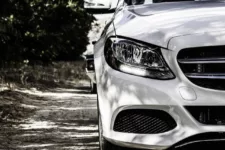Motoring in Crete may initially seem a little frightening, but with a little advance knowledge, it can be a wonderful experience. As for car rental Crete is one of the easier places to hire your own set of wheels.
The roads in Crete vary greatly in quality. There are beautiful narrow country roads with sharp bends. There are also long, wide dual carriageway roads with the different directions separated by a strip or barriers.
Rules of the Road
Driving in Crete is on the right, just as in Greece and most of Europe. Cars coming from the right have right of way, so cars entering a traffic circle go first and drivers in the circle must yield.
One thing you will quickly notice about Crete is that the roads are narrow and there is little room to pass. Slower drivers are expected to pull over to allow faster drivers to overtake.
Traffic signs are usually in Greek and English and Crete uses internationally recognized traffic signs.
Parking is allowed along most city streets, but parking spots are hard to find. Some areas require you to buy a parking card, which can be purchased at a nearby kiosk.
Use of horns in towns is permitted only in the case of immediate danger.
Speed Limits
Speed limits in Crete are 50 km per hour in built-up areas, and 90 kph on the highway. There are road signs indicating the speed limits and will often vary without apparent reason. These are favourite haunts of local police.
Another source of local law enforcement revenue is citations for drinking. Alcohol tests are frequently administered and the limit is 0,50 mg. You have to pay the fines in the locale where the ticket was issued, so it can interrupt your vacation schedule.
Fuel
Many petrol stations close at 7:00 PM, but stations on the highway will stay open later. In every city, there will be an all-night petrol station. Best to ask locals.
Most but not all stations accept credit cards. Lead-free is the only gas available. There is no self-service in Crete, so the station’s staff will fill your tank.
Emergencies
The number for emergencies is 112, the same as in other European countries. It is a toll-free, 24-hour line. There are no emergency phones along the highway, so you have to use your cell phone. Operators will direct your call to ambulance, fire, police, or coast guard services.
Roadside assistance can be reached by dialing 104. You can also reach the police directly by dialing 100, ambulance by dialing 166, and 199 for the fire brigade.
The Automobile and Touring Club of Greece offers information to foreign drivers. You can access it by dialing 174.
Miscellaneous advice
- Mopeds are very common and they like to pass on the right, so beware.
- If you see a car behind you flashing its lights, it usually means he wants to pass.
- Be extra careful driving on Saturday nights when drinking is more common.
- In town, beware of pedestrians on the road. Sidewalks are narrow.
- Turn signals seem to be optional in Crete, so pay close attention for the sudden turn.
- White lines also seem to be fairly regularly ignored, so watch for drivers drifting across the center lines.
- Roads are often in poor repair, so watch out for potholes and loose gravel.
- Maps and GPS are not reliable in remote areas, but the locals are friendly and helpful.
- Road signs are often small and hard to see.
- Part of the beauty of Crete is the relaxed attitude toward life, so enjoy it!








